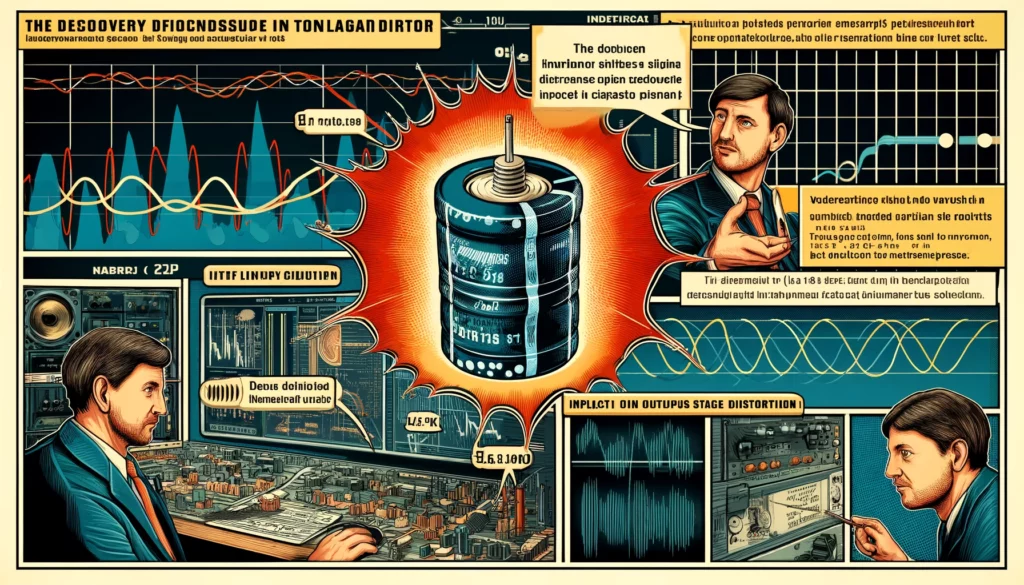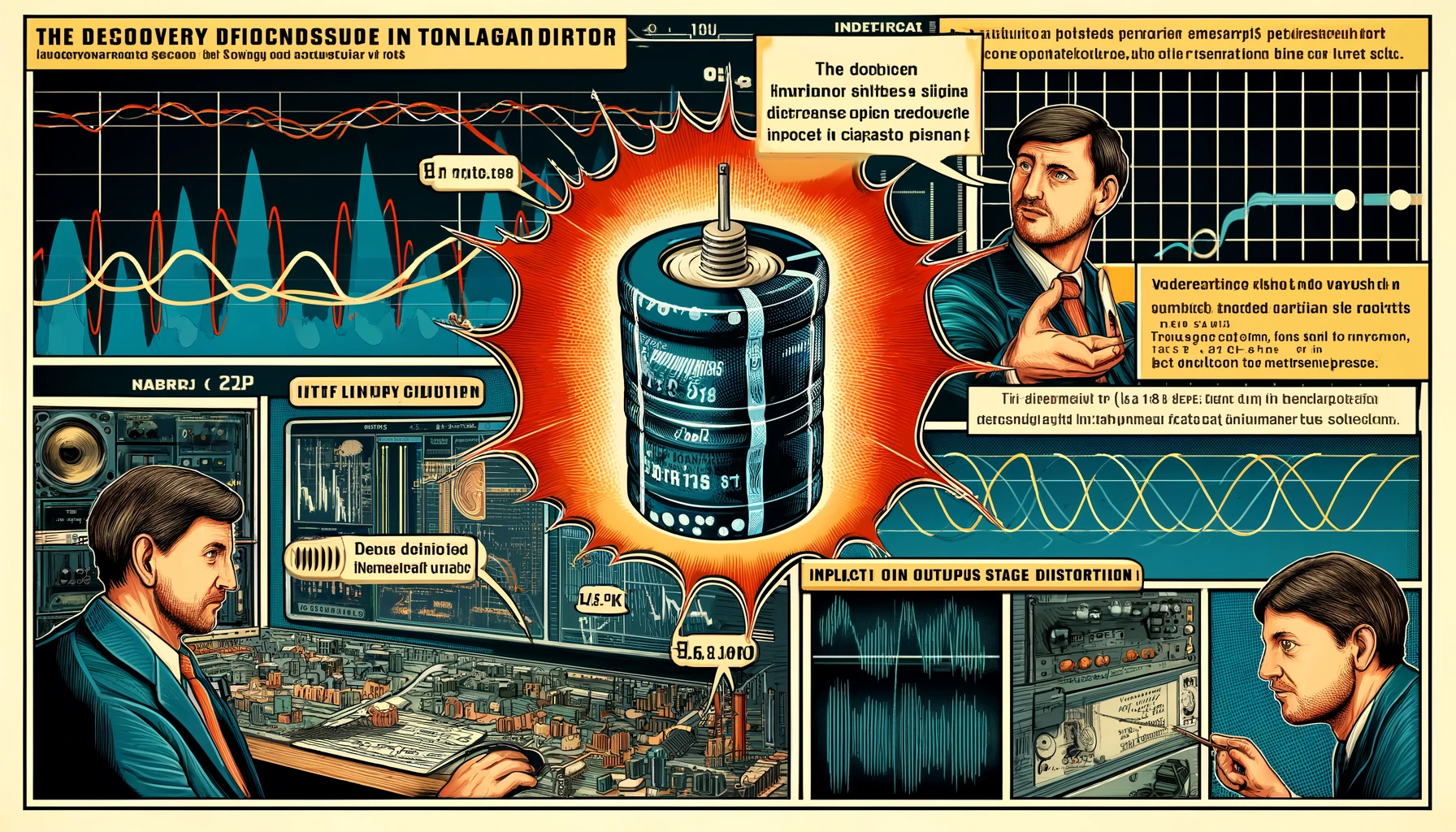Nonlinear Distortions in Capacitors
A major cause of audible, non-linear distortions in capacitors
By Menno ven der Veen: “We have discovered a major cause of nonlinear distortion in capacitors and we have shown that this effect can create significant -and thus audible- distortions in sound signals…this effect can introduce high levels of intermodulation distortion and thus lead to audible differences between capacitors.” This research directly relates to output stage bias schemes.
http://milbert.com/articles#menno_capacitors

Nonlinear distortions in capacitors can arise due to various factors, including dielectric properties, voltage dependence, and frequency response. Here are some key points about nonlinear distortions in capacitors:
1. Dielectric Properties: The dielectric material used in capacitors can exhibit nonlinear behavior under certain conditions. For example, at high electric fields or temperatures, the dielectric material may experience nonlinear effects such as dielectric relaxation, polarization saturation, or breakdown, leading to distortion in the capacitor’s performance.
2. Voltage Dependence: Capacitors can exhibit voltage-dependent capacitance, meaning that the capacitance value may vary with the applied voltage. This voltage dependence can introduce nonlinear distortions in the capacitor’s behavior, particularly at high voltages where nonlinear effects become more pronounced.
3. Frequency Response: Capacitors may have frequency-dependent characteristics, particularly in applications involving alternating current (AC) signals or high-frequency signals. Nonlinear distortions can occur when the capacitance value or impedance of the capacitor varies with frequency, leading to distortion in the signal waveform or frequency response.
4. Parasitic Effects: Parasitic elements such as series resistance (ESR), series inductance (ESL), and parallel conductance (G) can introduce nonlinear distortions in capacitors. These parasitic effects can contribute to losses, phase shifts, and nonlinear behavior in the capacitor’s performance, particularly at high frequencies or high currents.
5. Nonideal Behavior: In real-world applications, capacitors may exhibit nonideal behavior due to factors such as manufacturing tolerances, material imperfections, and environmental conditions. These nonidealities can contribute to nonlinear distortions in the capacitor’s performance, affecting its accuracy, stability, and reliability over time.
To minimize nonlinear distortions in capacitors, designers may employ techniques such as using high-quality dielectric materials, selecting capacitors with low voltage coefficients and low equivalent series resistance (ESR), and ensuring proper filtering and decoupling in circuit designs. Additionally, careful consideration of operating conditions, frequency requirements, and environmental factors can help mitigate the impact of nonlinear distortions in capacitor-based circuits and systems.
